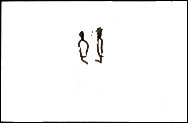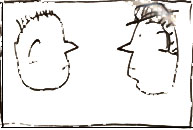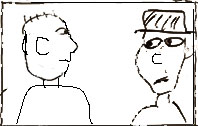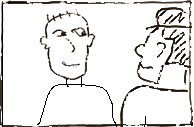CAMERA OPERATIONS AND CARE
- Equipment must be treated with the utmost care!
- never leave equipment unattended
- you are responsible for the equipment you use
- Wrap is a class activity, WHEN WRAP IS CALLED, EVERYBODY PARTISAPATES!
- crews must be back in the classroom five minutes before the end of class
- place batteries back on charge after use
- give memory chips to the instructor after the day of shooting
ON SET/LOCATION
FORMS
- create a shot list for each shoot day before arriving on set/location
- Use a tripod for each shot UNLESS THE SCRIPT DICTATES OTHERWISE
- Don't forget to white balance
- Slate each shot with scene and take numbers
- Use proper production protocol (action, cut)
- Note each shot on your continuity sheet
Pre production forms
10 second static shots: wide shot, med shot close up of same subject.
Moving shots
10 second shot pan right
10 second shot pan left
10 second shot tilt up
10 second shot tilt down
10 second shot zoom in
10 second shot zoom out
(on all camera moves, be static on the beginning and ending of each shot) Each shot has a beginning, a middle and an end.
Use the proper production protocol on all shots. Rotate crew positions. Each crew member will choose and direct their own shots and continuity sheets.
Understanding screen direction and camera direction
- CU - closeup MS medium shot
- WS wide shot
- ECU extreme closeup
- EWS extreme wide shot
- OTV - over the shoulder
- POV - point of view (of character)
Camera directions
- zoom in/out
- tilt up/down
- pan right/left
- camera right-house left
- camera left-house right
- dolly in/out
- boom up/down
- truck right/left
- arc right/left
Set directions
- enter
- exit
- camera right = house left
- camera left = house right
- house right = camera left
- house left = camera right
- upstage - away from camera
- downstage - closer to camera
Camera Blocking - how do you frame your shots to edit?
 |
EWS JOE AND BOB |  |
CLOSEUP JOE AND BOB |
 |
OVER JOE'S SHOULDER |  |
OVER BOB'S SHOULDER |
Interviews
There are several types of interviews
Man on the Street -
Identify yourself and explain who you are and who you represent.
Ask questions that have more than a 'yes' or 'no' answer
look the interviewee right in the eyes
stand close to the camera while your ask questions, unless you are on camera
if you are on-camera, than look at the person your are interviewing
60 Minutes style
Have your questions written before the interview
If the interviewee is the person of interest:
- write a letter asking for an interview
- identify and introduce yourself
- explain the project
- suggest a date time and place
- give the interviewee the questions that you will be asking
- wait for a reply
- when you are granted an interview followup with a 'thank you' letter and phone call